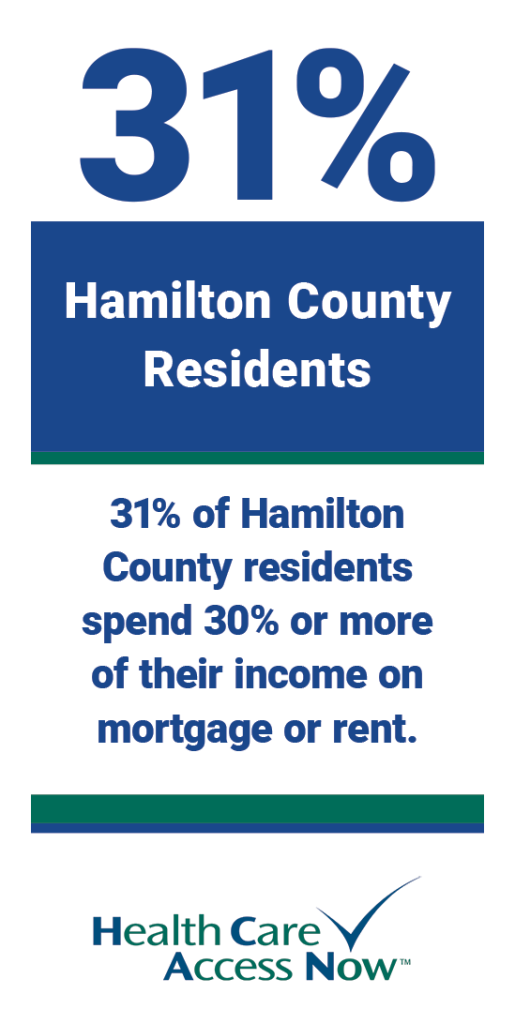Revitalization with respect: Connecting housing and health

Imagine a community with vibrant, safe, and inclusive neighborhoods in which all people live in healthy homes with equitable access to resources and opportunities to pursue their dreams. Nearby businesses serve everyone. The area is safe and walkable, with green space for recreation and exercise.
That’s the kind of place that The Community Builders (TCB) envision when they embark on a revitalization project. TCB, a nonprofit affordable housing organization, offers mixed-income housing for residents in urban neighborhoods, spanning across 15 states with a presence in several cities east of the Mississippi River, including Cincinnati.
“Our focus is two-fold; supporting individuals and families to thrive, but also creating healthier neighborhoods for them to live in as well,” says Jodi Cunningham, director of Health and Housing for Community Life (CL) at TCB.
How the process works

Whenever TCB decides to plant roots in a community, they conduct a resident needs assessment to determine strengths and challenge areas. That’s followed up annually with a community life questionnaire. “We gather information about economic, health and social needs such as primary care needs, health insurance status, income, social isolation, education, [and more],” says Cunningham.
This is done in the spirit of co-creation. They want to make certain that the changes they make and the community they build truly serves the existing residents. “We don’t go in with a canned curriculum,” she says. “We build programs together with resident leaders.”
That process results in transformations that benefit neighbors and contribute to their good health. As Cunningham says, “We’re committed to honoring the existing culture and history of a community, such as Avondale. We want to honor the community’s rich history and invest in the natural neighborhood leaders as thought partners and co-creators.”
Avondale revitalization
TCB began its work in Avondale more than a decade ago. “The strip mall [that functioned as a town center] had a lot of predatory businesses, such as check cashing and unhealthy food options.” And Avondale has been a food desert for many years.
Now, after input from the community, 70 percent of the businesses in the area are women- and minority-owned. These businesses include restaurants, day care, a federally qualified health center, and the “first and only laundromat in the neighborhood.” Cunningham is also excited about a grocery store opening soon.
“The residents have welcomed the changes. We’ve raised awareness about accessing the new businesses, and the reception has been very strong and exciting,” she says.
Workforce development—and a new Hub member!
TCB’s CL team “works diligently to build partnerships with different employers and training programs,” as part of their workforce training initiatives, Cunningham says. That includes working with Health Care Access Now (HCAN) to create a Community Health Worker (CHW) pilot program.
“Together with All-In Cincinnati, we’ve identified residents living in our neighborhoods that want to become Community Health Workers,” she says. We utilize our Health Champion program as a springboard for CHW trainees to receive service-learning hours, working with our resident leaders to gain experience as a CHW. TCB assists them by providing funding secured through a grant for HCAN’s CHW training program. “We also provide wraparound services, including transportation, childcare, and mentorship to ensure their success in the program.”
So far, four residents have entered the program. And one of their now-certified residents turned Health Champion leader, Ebone, serves as a CHW TCB staff member, supporting others in the neighborhood. “We’ve partnered with HCAN and become a Hub member.”
This initiative allows residents to “drive interventions and serve as decision-makers” for community health, not only providing individual-level support but also impacting city wide policy and systems level change.
What affordable housing can do
The affordable housing shortage needs to be addressed. “It should be made easier for developers and housing providers to build new affordable housing,” Cunningham says, whether that’s through policy change or tax breaks making it easier to build in certain neighborhoods.
“When you’re living in poverty, you can’t worry about anything else,” she says. “You can’t talk about reading to your kids if you’re worried about making rent, for example.”
She says that housing stability and “living in a healthy home you’re proud of” allows people to point their energy toward other issues. “It gives you the stability and space to prioritize enrolling in a training program or get your kids connected to an after-school program. It allows you to flourish.”






